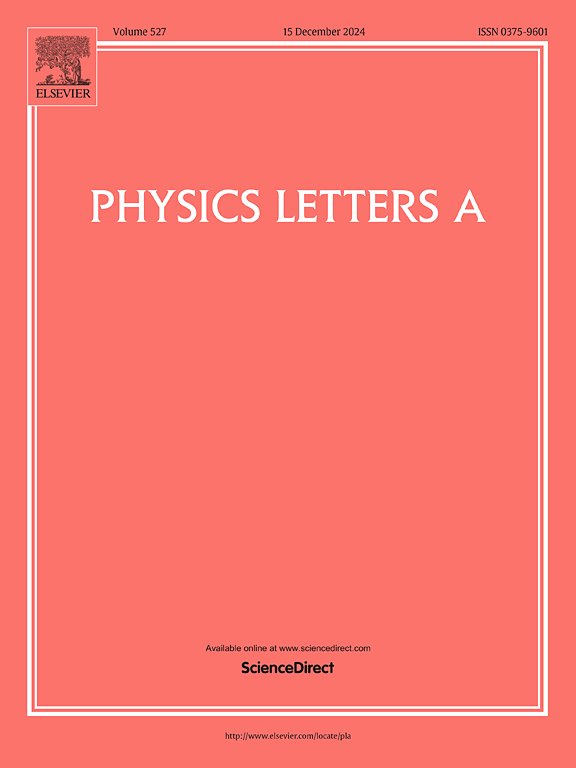在具有局域抽运的自散焦系统中,通过相互作用诱导局域解
IF 2.3
3区 物理与天体物理
Q2 PHYSICS, MULTIDISCIPLINARY
引用次数: 0
摘要
我们研究了在具有损耗和增益的被动腔中产生的诱导局域耦合模式。我们的模型基于线性耦合Lugiato-Lefever方程,其中高斯泵浦光束仅应用于一个模式。通过数值模拟,我们证明了自离焦系统能够支持伙伴场中局域平稳模式的形成。耦合强度、腔体衰减率、失谐效应以及泵浦光束的强度和宽度等关键参数决定了这些诱导模式的特性。本文章由计算机程序翻译,如有差异,请以英文原文为准。
Inducing localized solutions via interaction in a self-defocusing system with localized pumping
We investigate the emergence of induced localized coupled modes in passive cavities with both loss and gain. Our model is based on linearly coupled Lugiato-Lefever equations, where a Gaussian pump beam is applied to only one mode. Through numerical simulations, we demonstrate that self-defocusing systems are capable of supporting the formation of localized stationary modes in the partner field. The characteristics of these induced modes are determined by key parameters, including coupling strength, cavity decay rate, detuning effects, and the pump beam's intensity and width.
求助全文
通过发布文献求助,成功后即可免费获取论文全文。
去求助
来源期刊

Physics Letters A
物理-物理:综合
CiteScore
5.10
自引率
3.80%
发文量
493
审稿时长
30 days
期刊介绍:
Physics Letters A offers an exciting publication outlet for novel and frontier physics. It encourages the submission of new research on: condensed matter physics, theoretical physics, nonlinear science, statistical physics, mathematical and computational physics, general and cross-disciplinary physics (including foundations), atomic, molecular and cluster physics, plasma and fluid physics, optical physics, biological physics and nanoscience. No articles on High Energy and Nuclear Physics are published in Physics Letters A. The journal''s high standard and wide dissemination ensures a broad readership amongst the physics community. Rapid publication times and flexible length restrictions give Physics Letters A the edge over other journals in the field.
 求助内容:
求助内容: 应助结果提醒方式:
应助结果提醒方式:


